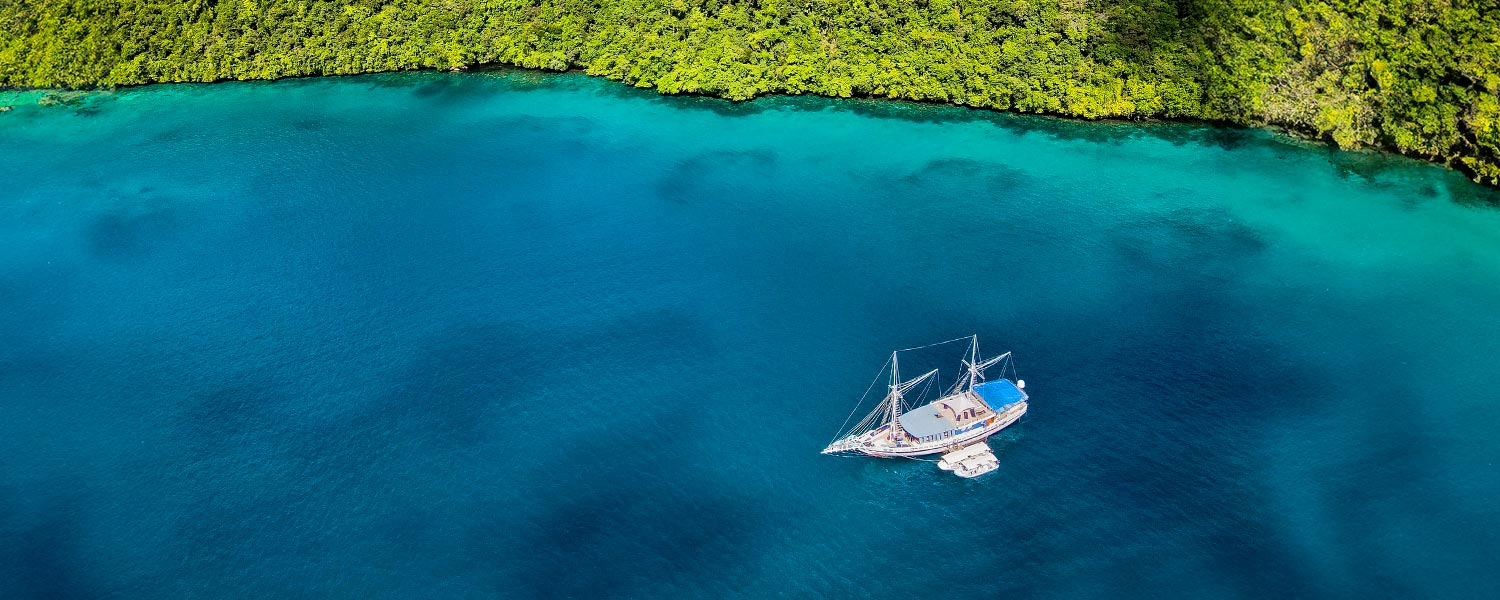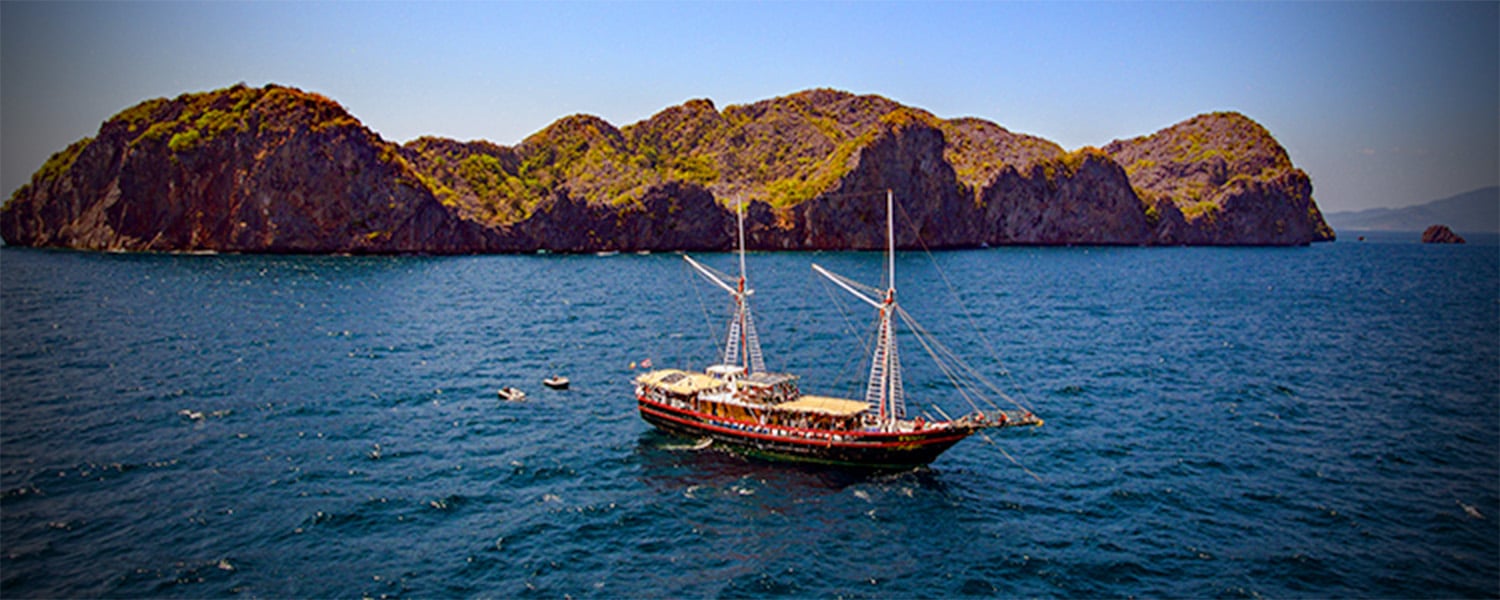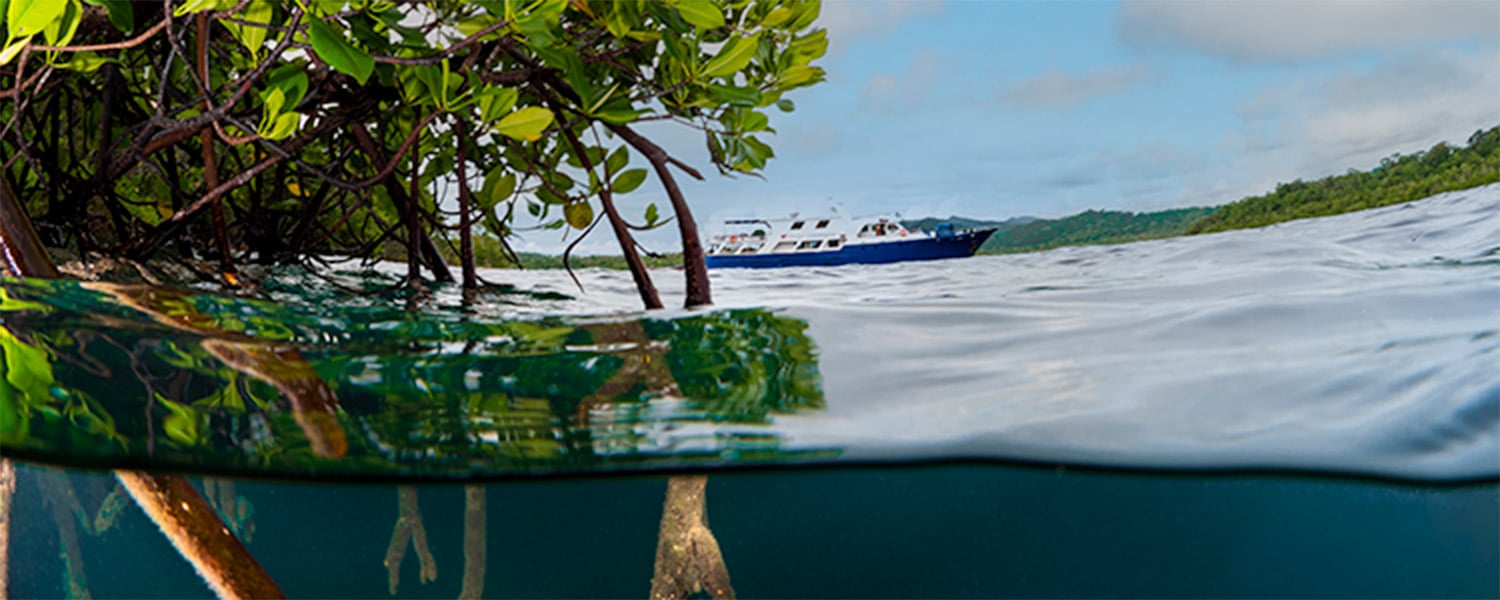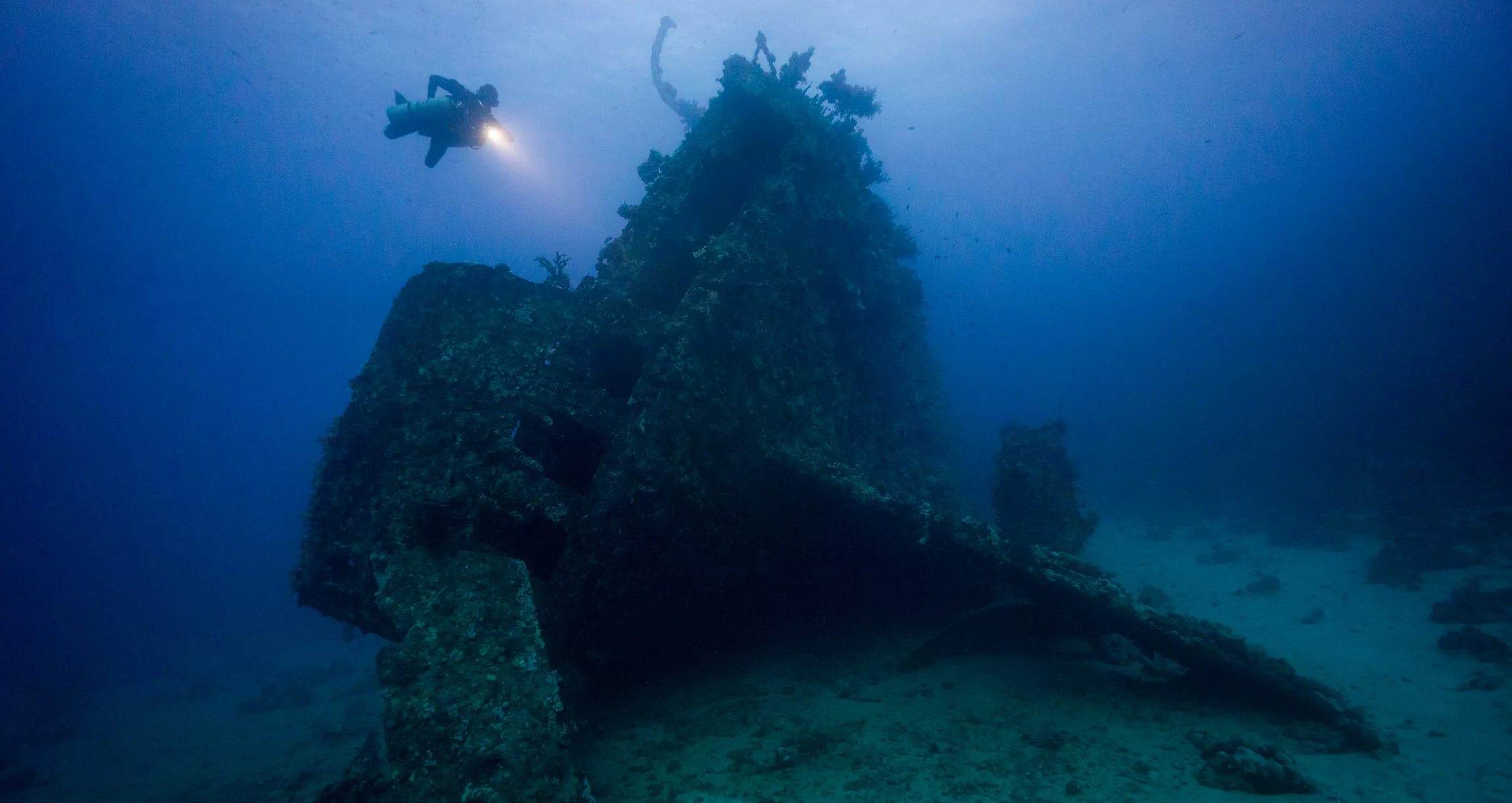Operation Hailstone is one of the reasons we dive in Truk Lagoon nowadays. But what is the history behind Operation Hailstone?
Tension between USA and Japan
It was not until 1941 that the USA entered WWII. They mainly saw it as an European war. However, the attack on Pearl Harbor changed everything for the USA.
It was not only the attack, but it was a series of events that led to the inevitable. First off, Japan was considered an ally of Germany and Italy. There was already also a confrontation between the USA and Japan due to commercial interests.
Japan was asking for ‘living space’ to carry out trade in the Pacific Ocean. The USA had been blocking Japanese trade since 1940. They were prohibiting exports of steel, scrap iron and aviation fuel. By this, they were effectively freezing all of Japan’s assets and preventing them from buying oil.
In July 1941, Japan took over Northern French Indochina. The Americans published then a public letter asking for the evacuation of the zone. Japan took the publication as an affront and so started to plan an attack against the USA.

Pearl Harbor
Shortly before 8 am on Sunday December 7th 1941, Japanese aircraft carried out a surprise attack in Pearl Harbor. Pearl Harbor was American fleet base on the Hawaiian Islands. In just 90 minutes the Japanese army managed to destroy 7 battleships, around 90 support ships, and 250 aircraft, with a total of some 5,000 servicemen wounded or killed.

The next day the United States declared war to Japan, officially entering into World War II.
The war against Japan was always going to be a difficult task because of the breadth and distances of the areas of combat, such as the Pacific Ocean. But the moment the USA entered the war, the balance definitely changed. From here on, and over more than three years, the USA and allied forces carried a series of attacks against the bases of Japan in the Pacific. These relentless efforts finally led to its final attack to Japan.
As divers, we can still see the remnants of these battles today. The most obvious of these are the wrecks sank during Operation Hailstone in Truk Lagoon. But there are also the lesser known Operation Desecrate One in Palau.
Task Force 58
The Japanese had been occupying Truk since the first world war. During World War II, Truk Lagoon became a very important base for the Japanese army. It was used as a supply base but also several warships were often anchored there.
After reconnaissance flights, the Americans realised that this tiny atoll was in fact the largest Japanese military base in the entire Pacific theatre. As such, the USA started planning an attack. The main aim was to destroy all the ships of the area and cripple the Japanese Imperial fleet.
This task was entrusted to Task Force 58. This naval force had 5 heavy aircraft carriers and four light carriers, together providing the ability to launch more than 500 aircraft. They also knew from intelligence reports that the commander of the Japanese Combined Fleet had transferred most of his fleet to Palau and other Japanese bases. This meant that the atoll was almost undefended. In fact, there was no heavy ship in the area that could cope with the American fleet.
Operation Hailstone was born and a plan was put in place.
17th and 18th February 1944
The attack started just before daybreak on 17th February 1944. When the attack came, it was in two major phases:
- The first wave of bombers on the first day were to sink any ships they found at anchor in the lagoon. They mainly used bombs and torpedoes.
- The second wave was to destroy most of the critical atoll facilities, such as fuel bunkers and munitions arsenals.
The plan was set in this way and order for a specific reason. If the US forces had destroyed the shore facilities on the first day. then the smoke would have made targeting the ships from the air more difficult! This strategy was so successful that the American attacks only lasted 2 days instead of the planned 3 days. After 2 days, they had accomplished all their objectives in Truk Lagoon.
Technology advantages
Most historians claim the surprise factor was undoubtedly a great help in destroying the Japanese military base, as it was in Pearl Harbor. For example, no Japanese air patrol was active at the start of the attack. Most personnel were actually enjoying shore leave after weeks on high alert.
However, many others claim that the technology used during the war was also very helpful to the Americans against Japan. Indeed the radar, an European invention that the Japanese didn’t have, was a great advantage for the Americans during Operation Hailstone. The Japanese were not capable of detecting low-flying planes at this point.
Because all of all these factors and due to the surprise and magnitude elements, many historians describe Operation Hailstone as the “Japanese Pearl Harbor “.

By US Navy, photographer aboard USS Intrepid (CV-11). – Naval History and Heritage Command, National Archives photo 80-G-215151, Public Domain
The intensive bombardment of Truk Lagoon was a disaster for the Japanese. Within half a day, the USA had crippled or destroyed two-thirds of the Japanese aircrafts. Moreover, the bombings rendered the airstrip totally unusable.
Due to the lack of air cover or warning, many merchant and army ships were caught at anchor with only the islands’ anti-aircraft guns. The vessels which managed escaping the lagoon were pursued relentlessly and sunk before they could make their escape.
The destruction
The historians estimate that the attack sank 250 warplanes, with the concurrent loss of irreplaceable experienced pilots, and about 40 ships. This estimate consists of 2 light cruisers, 4 destroyers, 9 auxiliary ships, and about two dozen cargo vessels.
The USA did not only concentrate on planes and vessels. They heavily destroyed the facilities on the islands. The various bases around the islands had dockyards, communications centers, supply dumps, and even submarine base. And 17,000 tons of fuel…. These losses were extremely severe for the Japanese forces.
The shipping losses totaled almost 200,000 tons including precious resources in fleet oilers. This represented almost one tenth of total Japanese shipping losses between 1 November 1943 and 30 June 1944!
Japaense crisis
Such was the disaster after the American attack that there was a crisis in the Japanese government. Many of its members were starting to think that the best solution was to negotiate the peace in the most honorable possible way, since defeat was already evident for many of them. Something very unusual at that time in the Sun Empire.
While this may not have happened, it certainly accelerated the isolation of this whole area of operations. It effectively created a separation between empire waters and critical fuel supplies to the south. The effect of such a disconnect was later seen during the Battle of Leyte Gulf where Japanese suffered from fuel shortages.
The neutralization of Truk Lagoon, and the seizure of Eniwetok, paved the way for the upcoming invasion of Saipan, which for the first time put USA heavy bombers within range of the Japanese home islands.
Japan started to rebuild Truk as a bomber air base after Operation Hailstone. But the USA attacked again on April 29, 1944. There was no more significant naval buildup at Truk after Operation Hailstone.

And now?
Now you can dive the wrecks of the WWII Japanese Imperial Navy fleet that rest within Truk Lagoon at depths ranging from 18 metres to 64 metres. Many of the wrecks are “Maru” or merchant vessels that had been left at anchor in the lagoon.
Some had been fortified with anti-aircraft weapons and many carried important army supplies including aircraft parts, tanks, torpedo shells, trucks and road supplies.
You will find bottles, cooking utensils, personal belongings and other items from everyday life in several of the wrecks, serving as a poignant reminder of those who lost their lives during Operation Hailstone.

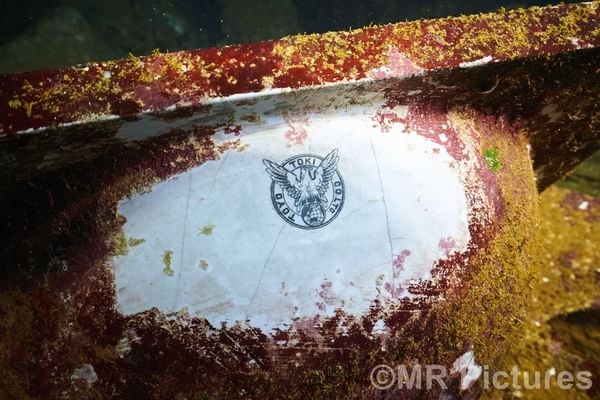
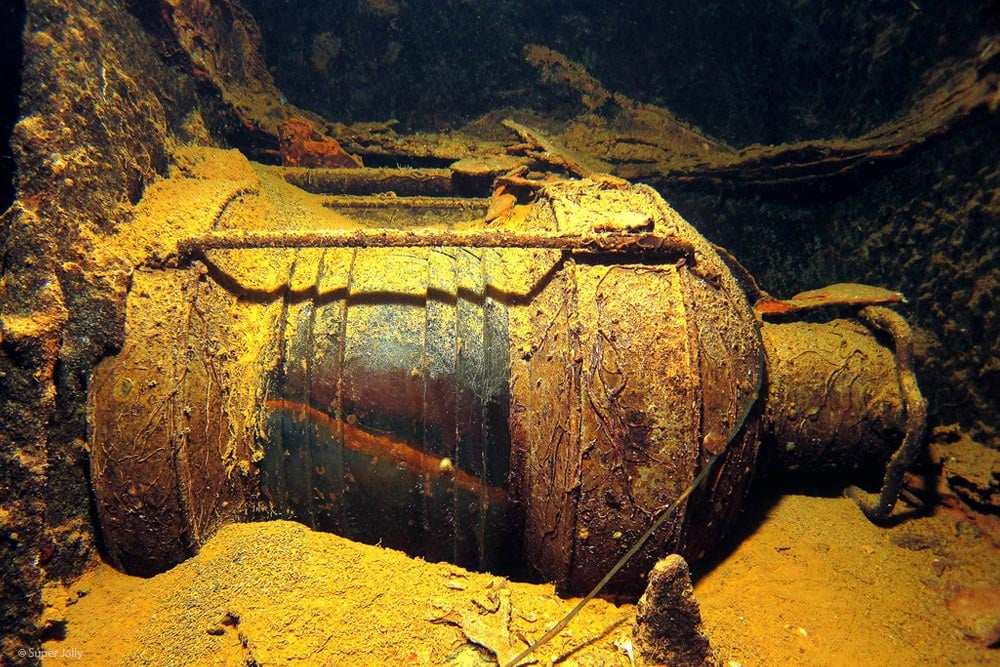
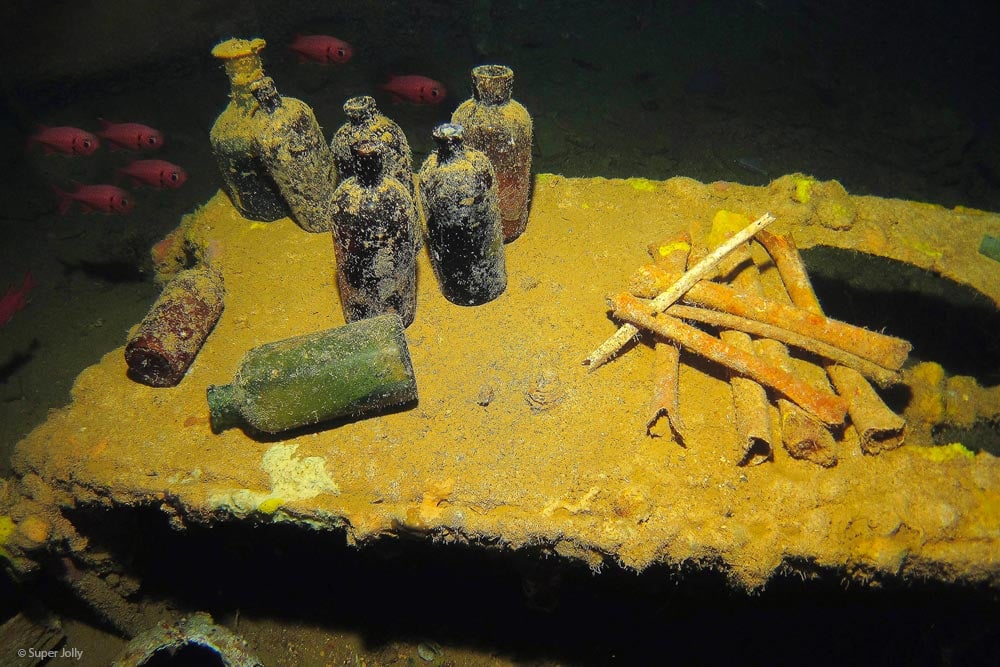


Would you like to explore these amazing WWII wrecks and learn a little bit more of their history? Then join us on Pacific Master and Palau Siren! You just have to choose your destination and we will look after the rest! Contact us for further information!
